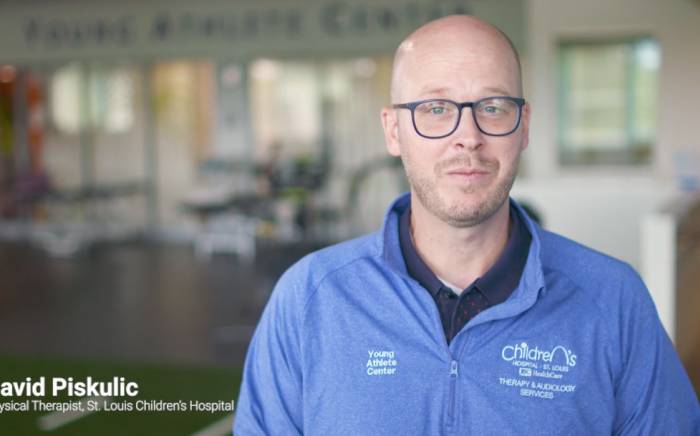Osgood-Schlatter is an alteration in the development of the tibial tuberosity due to repeated applications of tensile forces. Some physicians consider it to be microfractures of the tubercle. Simply put, it is a relative overuse phenomenon, in a susceptible knee, due to increase stress at the tibial tubercle.
When does it develop?
It is most common in the 11 to 14 year old age group. The development of Osgood-Schlatter is associated with the time of rapid growth and immature bone maturation in early teen years.
Who can get it?
Any adolescent who participates in activity that can exceed the strength of the tibial tubercle by the quadriceps muscle contraction. This can occur in vigorous sports activities that require frequent running, jumping or squatting (ie. Basketball, volleyball, baseball, soccer). It presents in both knees in 20-30% of individuals, and young men are affected more frequently than young women.
How do we treat the painful knee with Osgood-Schlatter?
The key treatment is relative rest. This does not mean elimination of athletic activities, rather it means alteration and modification of each individuals activities, this means possibly curtailing all activities up to 6 weeks, with subsequent gradual increase in activities.
What are other treatments?
Polar therapy (heat and cold)
- Cold Therapy is initiated for the first 48 to 72 hours after activities. This is accomplished with ice in a towel, plastic bag of frozen peas or chemical cold pack. The cold should be applied 15-20 minutes and off for 1 hour to minimize potential injury to the skin.
- Heat can be applied not earlier than 3 days after an exacerbation of the knee pain and can be done with hot packs, hot tub baths or whirlpools.
Nonsteroidal Anti –Inflammatory
- Anti-Inflammatory products can be used as needed for pain.
- Ibuprofen, Motrin, Nuprin, Aleve
- If stomach irritation occurs with the above, then Acetaminophen (Tylenol) can be used.
Immobilization
- Only if SEVERE pain
- Short course of immobilization (ie. 4 weeks)
- Removable knee immobilizer
Exercises
Range of motion exercises and strengthening of the knee is necessary to prevent stiffness and atrophy.
Once knee pain disappears can it reoccur?
Yes, Osgood Schlatter’s is frequently a cyclical problem corresponding to the individuals activity level. Typically 12-24 months is required for resolution of symptoms (the approach of skeletal maturity).
Is there anything that can be done to prevent the recurrence of knee pain?
Warm ups
Adequate pre-activity warm-ups (including stretching) allows the leg function at its maximum.
Knee pads or Straps
If the individual participates in activities in which the tibial tubercle may be struck or hit directly, knee pads are recommended to prevent additional injury. Use of a knee strap can help some individuals minimize symptoms, by altering the forces around the tibial tubercle. Stretching exercises (especially of the quadriceps and hamstrings) may be needed if there is tightness of the muscles or of the legs.
Can Strengthening Program Help?
For some individuals an organized strengthening regimen can help. Exercise such as leg curls, straight leg raises, sit-ups, and wall sits can sometimes minimize symptoms. One should stay away from deep knee bends, squats with weights and exercises involving sudden jerking of the knee. Exercises such as cycling or swimming are excellent activities to maintain overall aerobic condition.
Will the BUMP on the front of the knee go away?
This bump will improve slightly as the inflammation and irritation resolves. However, the knee or knees will always looks “knobby” and one may have a difficulty kneeling on the bump in the future.
What is the Long Term Prognosis?
The good thing about this diagnosis is that it is a self-limited problem that ends at skeletal maturity for over 95% of those afflicted. Occasionally there is a bone island (or ossicles) within the patellar tendon that can cause pain into adulthood. If this bone island is sufficiently symptomatic it can be excised after skeletal maturity (approximately 15 years in women and 17 years in men).








